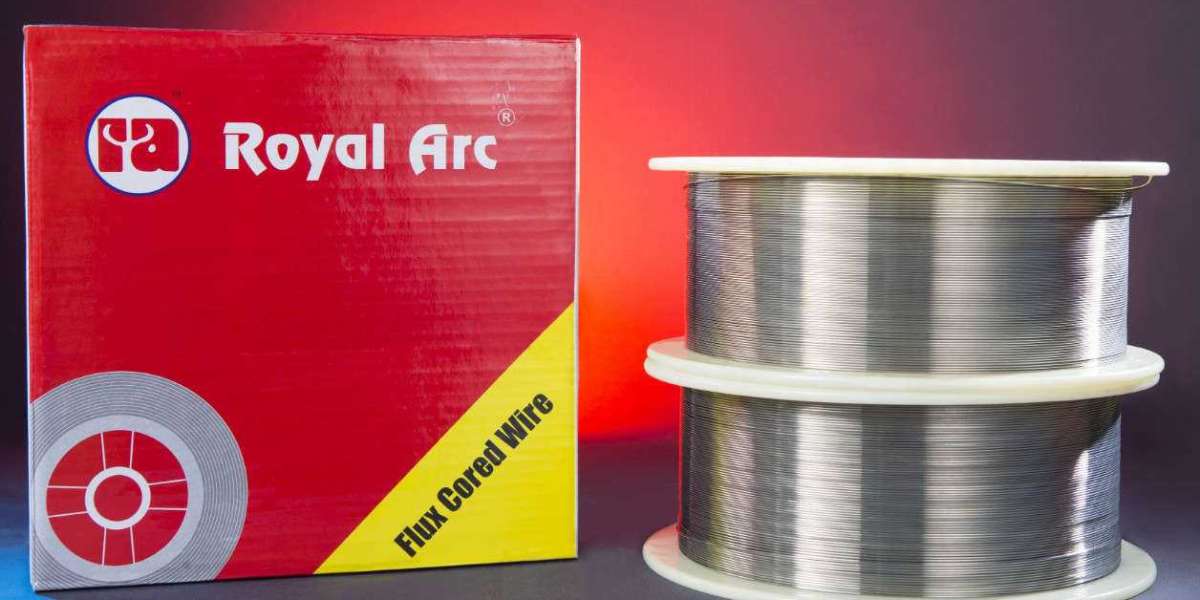The flux-cored wire is an excellent option for welders who frequently need to weld outdoor materials or on unclean material; flux-cored welding can be a great option. Flux-cored welding is a technique that involves feeding a continuous hollow wire electrode into the weld joint through the welding gun. Self-shielded flux-cored welding varies from MIG welding in that it does not require an external shielding gas to protect the weld pool from contamination, such as carbon dioxide or argon. Instead, a flux compound in the wire acts with the welding arc to create a gas that shields the weld pool. Shielding gas is required for another procedure, gas-shielded flux-cored welding. flux cored welding wire manufacturers provide materials commonly utilized in heavy-duty industrial fabrication and production, and it's not usually suggested for beginning or hobbyist use.
Self-shielded flux-cored welding avoids the weld difficulties when a strong wind blows the shielding gas away while MIG is welding outside since the flux provides the shielding gas. The flux stored in the electrode also permits the process to be more tolerant of rusted, filthy, or otherwise contaminated base metal.
Like stick welding, flux-cored welding produces a slag that rests on top of the final weld and must be chipped off, and it also produces welds that aren't as visually appealing as MIG welds. For these reasons, switching to the MIG process for indoor welds makes sense if you have a power supply capable of doing MIG and flux-cored welding.
Why procure consumables from flux cored wire manufacturers, and How Does It Work?
The process involves a constant-voltage welding power source, continuous wire-fed electrode, and the same equipment utilized in metal active gas welding in welding procedures (MAG welding). Flux-cored arc welding, which may be done with or without shielding gas, is far more efficient and cost-effective than MAG welding.
Flux cored wire manufacturers provide top-quality consumables with which the heat generated by an electric arc is used to combine the base metal in the weld joint region. It employs a hollow or tubular electrode filled with a flux-cored wire that forms a gas to protect the weld pool.
The procedure is widely used in outdoor welding and on contaminated materials due to the penetrative capabilities of flux-cored wires and high deposition rates. External shielding gas is not required for flux-cored arc welding to protect the weld from the elements. When the material is used on thick materials, it produces "slag." You can carve it out later to make it look cleaner and more polished.
Factors to consider while using welding consumables from Flux cored wire manufacturers
1. Preparing the
Flux-cored welding from flux cored welding wire suppliers is more forgiving of surface contamination than MIG welding. However, it's always a great idea to clean the base metals' surfaces as precisely as possible to avoid contaminating the final weld with a rusty or scaly surface. Cleaning the basic metals is easy using a metal brush or grinder. Make sure the area of the base metal in which the ground clamp will be fastened is clean as well. Poor ground clamp contact will cause resistance in the welding circuit, leading to poor weld quality. Cored welding wire manufacturers suggest sharpening the edges of the base materials for anything over 1/4 inch to ensure perfect fusing of the two components. This is particularly true in the case of butt joints.
2. Amperage and voltage
Metal thickness, joint arrangement, welding position, and wire diameter all influence how much voltage and amperage a weld requires. On your power supply, there are reference tables to help you establish the proper voltage and wire feed speed based on the wire diameter and material thickness. A wonderful tool to use is our flux-cored welding calculator. These tools should be used as approximate guidelines, with a few test welds to fine-tune your final specifications.
3. Equipment Preparation
A. Examine your cords: Check your welding equipment before striking an arc to ensure sure all of the cable connections are secure and free of fraying or other damage. For better results make use of the consumables from top flux cored welding wire dealers.
B. Choose the polarity of the electrodes: DC electrode negative, or straight polarity, is required for flux-cored welding. The polarity connectors are normally situated near the drive rolls on the inside of the machine.
C. Make sure you are using the right drive rolls: Because the flux-cored wire is softer than solid wire, knurled drive rolls provide the wire with a good "bite" without crushing and deforming it, as normal drive rolls might.
D. Check the tightness of the wires: Poor wire feeding performance can be caused by too much or too little strain on the drive rolls or the wire spool hub. Adjust according to the instructions in your owner's handbook.
E. Examine the consumables: Remove any excess splatter from contact tips, replace damaged contact tips and liners, and throw away the wire if it appears to be rusted.
Make the welding process of your plant more seamless and effective with flux cored welding wire manufacturers in Mumbai
Get a free Quote!








